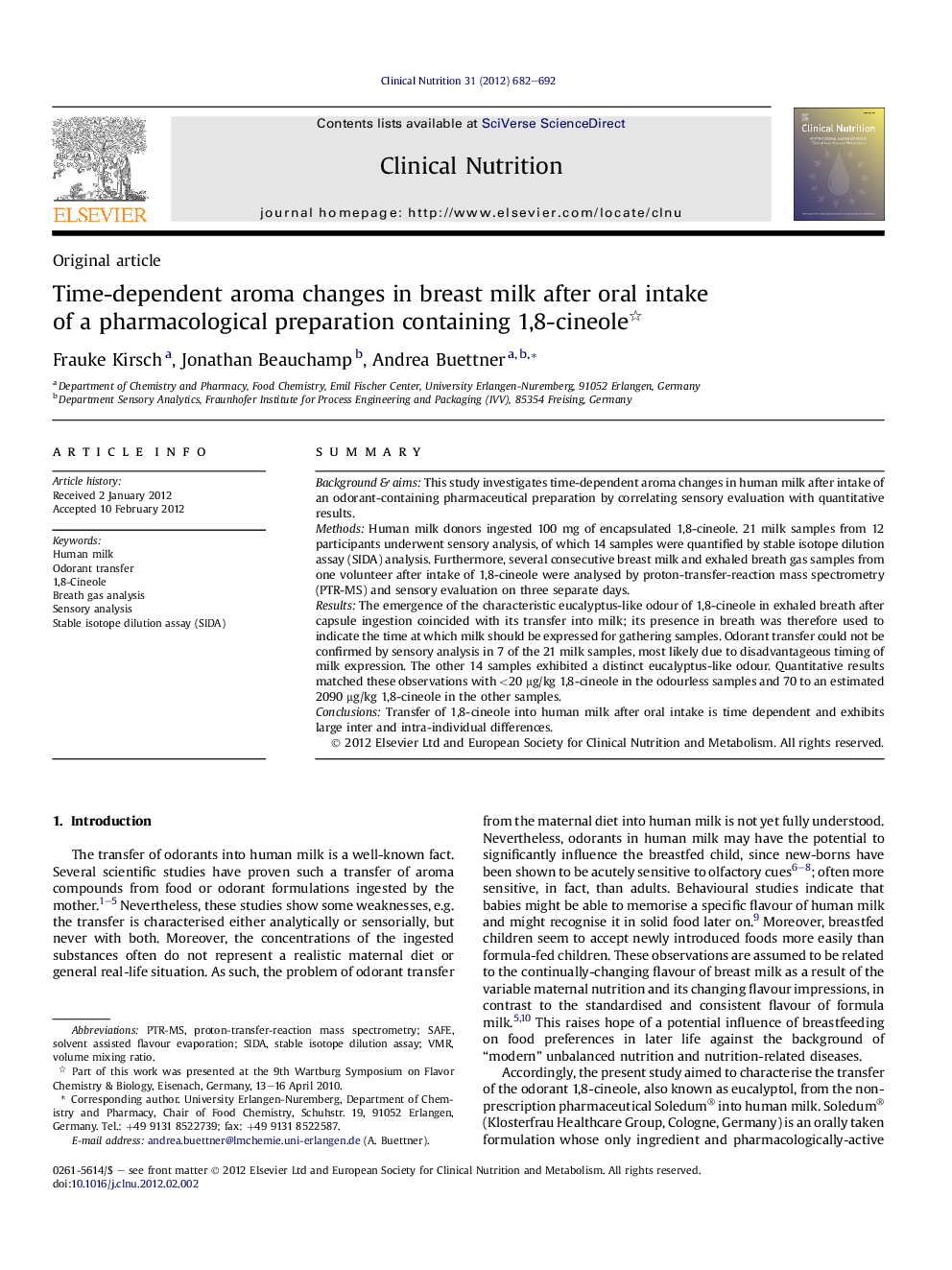| Article ID | Journal | Published Year | Pages | File Type |
|---|---|---|---|---|
| 2687140 | Clinical Nutrition | 2012 | 11 Pages |
SummaryBackground & aimsThis study investigates time-dependent aroma changes in human milk after intake of an odorant-containing pharmaceutical preparation by correlating sensory evaluation with quantitative results.MethodsHuman milk donors ingested 100 mg of encapsulated 1,8-cineole. 21 milk samples from 12 participants underwent sensory analysis, of which 14 samples were quantified by stable isotope dilution assay (SIDA) analysis. Furthermore, several consecutive breast milk and exhaled breath gas samples from one volunteer after intake of 1,8-cineole were analysed by proton-transfer-reaction mass spectrometry (PTR-MS) and sensory evaluation on three separate days.ResultsThe emergence of the characteristic eucalyptus-like odour of 1,8-cineole in exhaled breath after capsule ingestion coincided with its transfer into milk; its presence in breath was therefore used to indicate the time at which milk should be expressed for gathering samples. Odorant transfer could not be confirmed by sensory analysis in 7 of the 21 milk samples, most likely due to disadvantageous timing of milk expression. The other 14 samples exhibited a distinct eucalyptus-like odour. Quantitative results matched these observations with <20 μg/kg 1,8-cineole in the odourless samples and 70 to an estimated 2090 μg/kg 1,8-cineole in the other samples.ConclusionsTransfer of 1,8-cineole into human milk after oral intake is time dependent and exhibits large inter and intra-individual differences.
